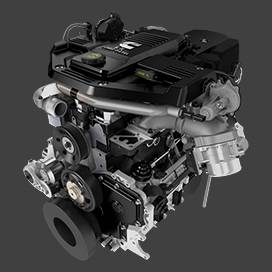Aug . 16, 2024 16:41 Back to list
Understanding the Definition and Function of Brake Drums in Automotive Systems
Understanding Brake Drums Definition and Functionality
Brake drums are essential components within a vehicle's braking system, particularly in drum brake setups. They play a crucial role in ensuring that a vehicle can slow down or stop effectively, providing safety and control for drivers and passengers alike.
Definition of Brake Drums
A brake drum is a cylindrical component that is typically mounted on the wheel hub of automobile wheels. It functions as a surface against which the brake shoes press to create friction and slow down or stop the vehicle. When the driver applies the brakes, hydraulic pressure is created within the brake system that pushes the brake shoes against the interior surface of the brake drum. This friction generates the necessary force to slow the wheel's rotation, ultimately bringing the vehicle to a halt.
Structure and Materials
Brake drums are usually made from cast iron or other highly durable materials that can withstand significant heat and wear during braking. The design of brake drums allows for efficient heat dissipation, an important factor since braking generates a substantial amount of heat. Some modern vehicles may use composite materials or aluminum alloys for reduced weight and improved performance.
The interior surface of the brake drum is often machined to be smooth, providing a better surface for the brake shoes to make contact. Over time, however, this surface can become glazed or worn down, which can lead to decreased braking performance. Regular maintenance, including inspection and resurfacing, is essential to maintaining optimal functionality.
Functionality in Drum Brake Systems
brake drums definition

The operation of brake drums is closely tied to how drum brakes work. In a typical drum brake system, when the brake pedal is pressed, brake fluid is transmitted through the braking system to the wheel cylinder, which pushes the brake shoes outward against the drum. As the shoes reach the drum's inner surface, they create friction, which slows the drum's rotation and, consequently, the wheel's movement.
One notable feature of drum brakes is their self-applying mechanism. As the brakes engage, the rotation of the drum can cause the brake shoes to be pushed further against the drum, increasing the braking force without additional pedal input. This characteristic helps provide stronger stopping power compared to disc brakes in certain scenarios.
Advantages and Disadvantages
Brake drums have several advantages. One of the primary benefits is their ability to provide a high degree of braking force, making them particularly effective on heavier vehicles or those that require strong stopping power, such as trucks and buses. Additionally, they are typically less expensive to manufacture than disc brake systems and can be quieter during operation.
However, they also come with certain disadvantages. Brake drums tend to be heavier and can be affected more significantly by heat buildup, which can lead to brake fade— a condition where brakes lose effectiveness after prolonged use. Moreover, drum brakes are more susceptible to moisture and debris, which can compromise their performance.
Conclusion
In summary, brake drums are integral components of many vehicle braking systems. Their functionality relies on the creation of friction through the interaction between the brake shoes and the drum's interior surface. Understanding the importance of brake drums, their structure, and their advantages and disadvantages can enable vehicle owners to maintain their brakes effectively, ensuring safety and reliability on the road. Regular inspections and maintenance of brake systems, including checking the condition of brake drums, are vital for optimal vehicle performance and safety.
-
IVEKO High-Performance Brake Drums Durable & Precision-Engineered
NewsMay.17,2025
-
Brake Drum Man High-Quality Drum Brake & Shoe Solutions
NewsMay.17,2025
-
Brake Drum Man Premium Drum Brake & Shoe Solutions OEM-Compliant
NewsMay.16,2025
-
Brake Drum Man High-Quality Drum Brake & Shoe Kits for Vehicles
NewsMay.16,2025
-
Brake Drum Man High-Quality Drum Brake Parts & Expert Solutions
NewsMay.16,2025
-
Brake Drum Man High-Quality Drum Brake & Shoe Solutions
NewsMay.15,2025
